The nervous system detects everything going on with us and decides how our body responds. That means actions, internal organ alterations, and brain functions. It does this by relying on neurons, which form a sophisticated network in our brain.
Estimations show that we have around 86 billion neurons in the brain. The network is comprised of thousands of neurons connected to communicate. They’re not the basis of the nervous system for nothing! Let’s find out how they work.
Page Contents
Neuron structure
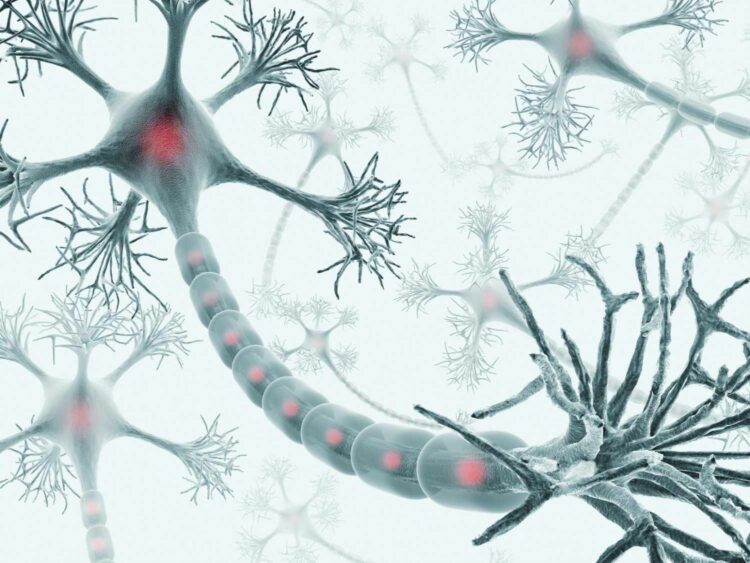
Source: verywellmind.com
Did you ever wonder “What are neurons made up of?” These basic building blocks of the nervous system are specialized cells that receive and transmit information. They have distinct parts that play specific roles in communicating data throughout your body.
In other words, they are information carrier cells from the central and peripheral nervous systems. That includes the brain, spinal cord, and the body. Neurons use chemical signals and electrical impulses to communicate information.
The essential parts of a neuron are the dendrites, the soma, and the axon. You can only see them under a microscope. Let’s see what they look like and what their functions are.
Dendrites
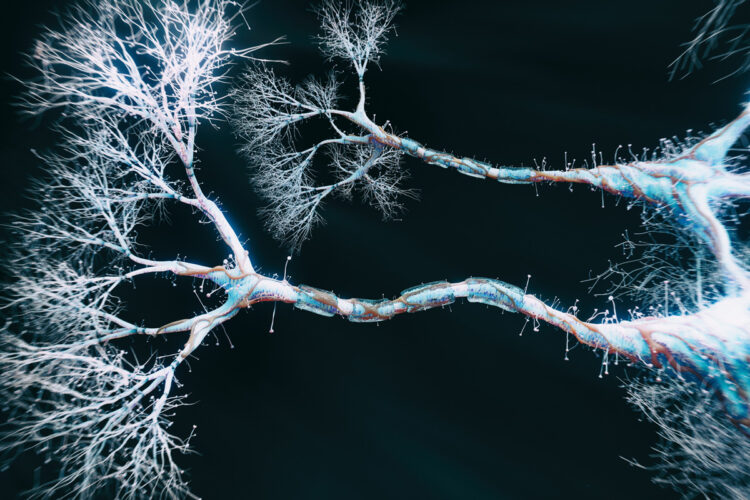
Source: news.mit.edu
The dendrites are extensions that look like trees located at the beginning of a neuron cell. They increase cell surface area and receive data from other neurons. They also electrically stimulate the soma and are covered with synapses.
Some neurons have only one dendrite, while others have more. The dendrites extend from the cell body and receive chemical signals from other like-minded cells. They turn into electrical impulses sent to the cell body.
Some dendrites are short, while others are very long. Usually, those in the central nervous system are long and complex because they can receive thousands of signals from other neurons. When large enough electrical impulses are sent toward the cell, they can generate actions – signals transmitted to the axon.
Soma
The soma is the cell body where signals from the dendrite come together. It contains the nucleus with genetic information. It also has cytoplasm, a fluid that has most of the cellular material found in a neuron.
The soma doesn’t play an active role in transmitting neural signals. Instead, it maintains cell functionality. In other words, the soma is a little powerhouse that fuels the neuron by producing proteins that other parts of the neuron use to function correctly.
Axon
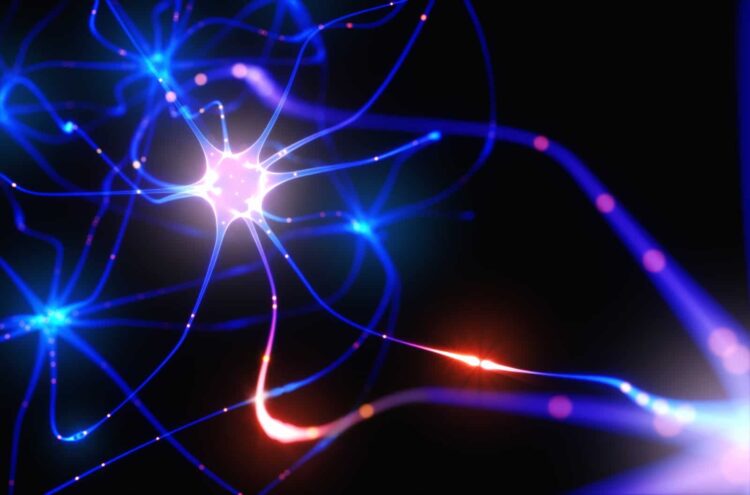
Source: techexplorist.com
The axon has two parts, the axon hillock and the axon itself. The axon hillock is at the end of the soma. It‘s responsible for firing neurons down the axon, like a manager. It holds excitatory and inhibitory signals, and when they go past a certain threshold, electrical signals get sent to the axon from the soma.
The axon is that elongated fiber that sends the neural signal. The speed of information transmission is determined by an axon’s diameter size. Myelin is an insulator that can cover some axons to help send information faster.
It’s normal for neurons to have only one axon, but not exclusive. Axons connect through synapses to other cells, including organs, muscle cells, and neurons.
At the end of the neuron, you’ll find terminal buttons that send signals to other neurons. Synapses are located at the end of the terminal buttons. They use neurotransmitters to send signals across to other neurons. They convert electrical impulses into chemical signals.
Neuron types
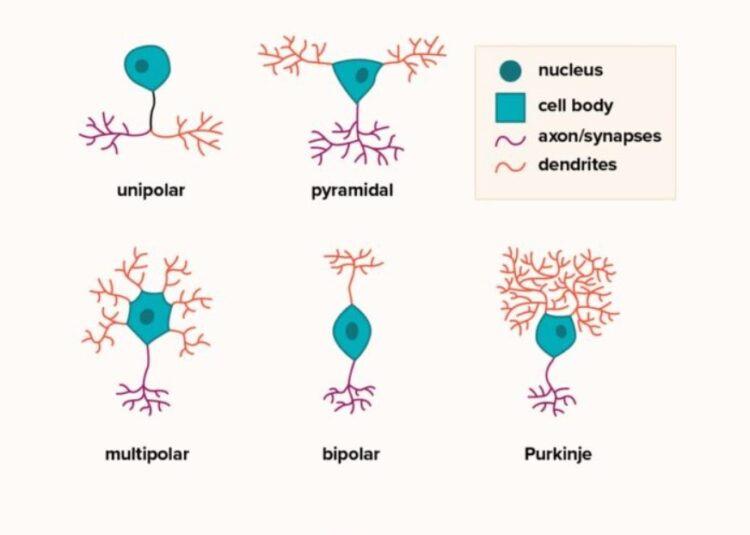
Source: healthline.com
You can categorize neurons based on their structure, function, and genetics. So, we will talk about the most important ones, namely:
- Unipolar neurons – with one axon, specific to invertebrates
- Multipolar neurons – one axon and symmetrical dendrites, common to the central nervous system
- Bipolar neurons – with two extensions that host the axon and dendrites, respectively. They’re specific to the eye retina but exist in parts of the nervous system related to nose and ear functions too
- Pyramidal neurons – described as having one axon and multiple dendrites that form a pyramidal shape. They’re found in the cortex, which is the brain part responsible for conscious thoughts
- Purkinje neurons – they have multiple dendrites spread out from the cell body. They inhibit other neurons from firing.
Neuron functions
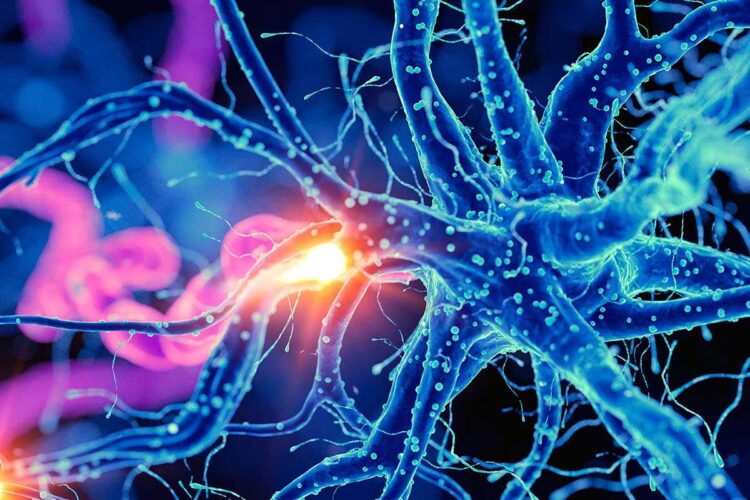
Source: newscientist.com
Neurons send electrical impulses and chemical signals throughout the body and to and from the brain. The process is known as action potential, a process described as a rapid flow of electrical voltage going from the neuron to the axon. It allows information to go from one neuron to another through the body.
Neurons can be split into types based on their function too. We will mention the following:
- Interneurons – nerve cells that connect the motor and sensory neurons. They send information to and from other neurons.
- Motor neurons – responsible for sending electrical impulses and data from the central nervous system to muscles. They control body movements. They can be further split into upper motor neurons, which send info from the brain to lower motor neurons, and lower motor neurons which send the data from the upper motor neurons to body muscles.
- Sensory neurons – they allow people to experience sensations. For example, when you get hurt, sensory neurons send chemical and electrical impulses to your brain via the nervous system and let your brain know you should feel pain. You can activate sensory neurons through tactile movements (touch) or chemical reactions (taste, smell).
Conclusions
Neurons play a vital function. They serve as the foundation for the whole nervous system by transmitting info throughout your body’s cells. Knowing more about them allows you to understand how they work and how they are affected by various conditions, such as illnesses.





